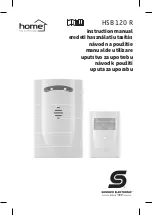
MAINTENANCE
3-4
powermax1000
Service Manual
1
Theory of operation
General
Refer to the
Functional description
and
Sequence of operation
sections below, and to Section 6,
Wiring diagrams
.
Functional description
AC power enters the system through the power switch (S1) to the input diode bridge (D24). The voltage from the
diode bridge supplies the Power Factor Correction (PFC) Boost Converter, which provides a 750 VDC bus voltage.
The bus voltage then supplies voltage and current to the inverter and the flyback circuit power supply (DC-to-DC
converter) on the power board (PCB2). The power board provides noise suppression and spike protection. A “soft
start” is implemented via the power board resistor and relay (K1).
The PFC Boost Converter consists of an isolated gate bipolar transistor (IGBT Q7), choke and control circuit. It
provides a 750 VDC bus voltage when the input AC voltage is between 170 and 540 VAC. When the input voltage
is above 540 VAC, the bus voltage will rise to (V
in
)( 2).
The inverter consists of an IGBT (Q6), the power transformer (T2), a current sense transformer, and sections of the
power board. The inverter operates as a pulse-width, modulator-controlled bridge circuit that is rectified by the
output diode.
The output circuitry consists of 2 current-transfer sensors located on the power board, the pilot-arc IGBT (Q8), and
the output choke.
The control board’s microprocessor monitors and regulates system operation and safety circuits. The current
adjustment knob is used to set to the current to the desired value. The system compares the set point to the output
current by monitoring the current sensor and adjusting the pulse width output of the inverter IGBT (Q6).
The control board (PCB3) includes a pilot arc control switch, which allows the operator to turn ON the pilot arc
(useful when cutting expanded metal), turn OFF the pilot arc (for maximum life of consumables), or to increase the
pilot arc to 20A (useful for gouging or non-transferred-arc cutting).
















































